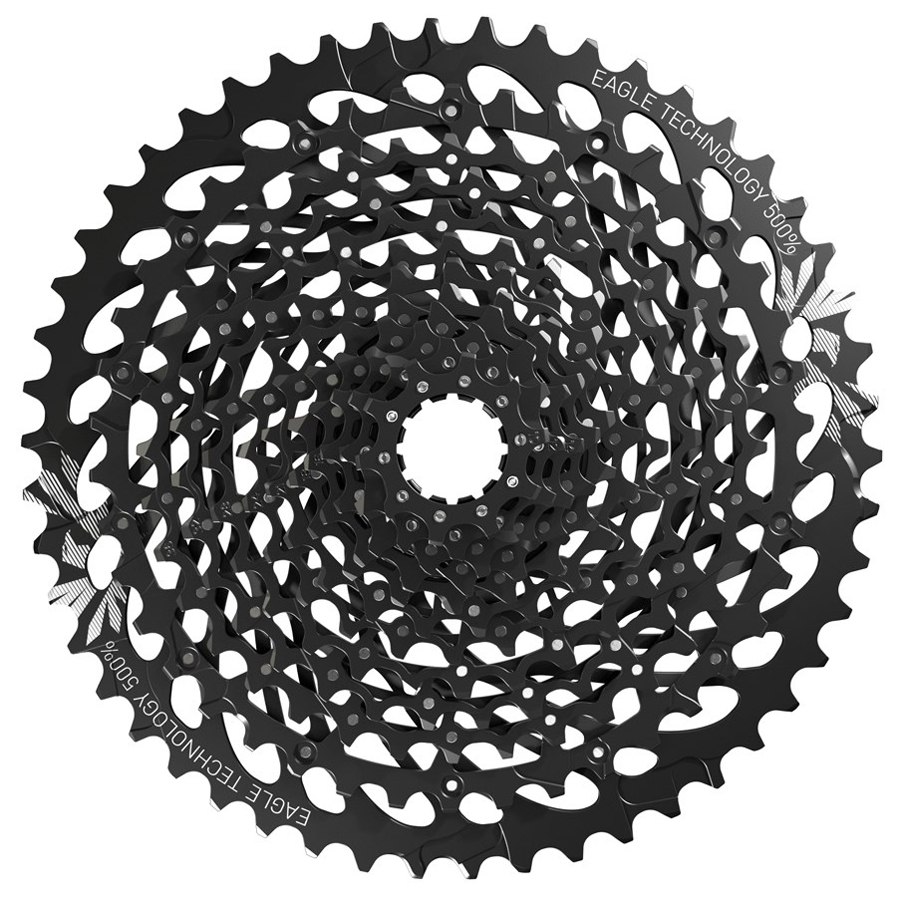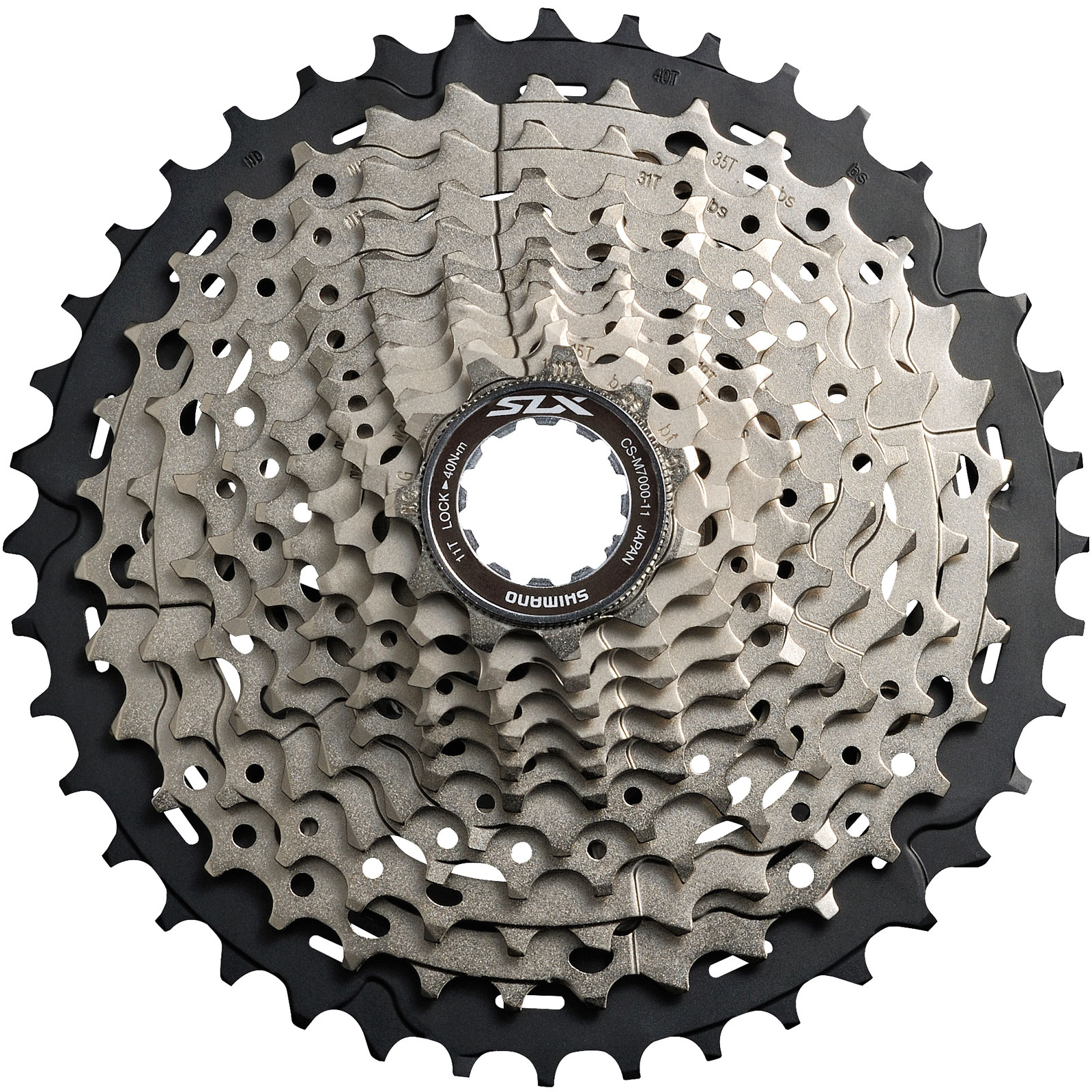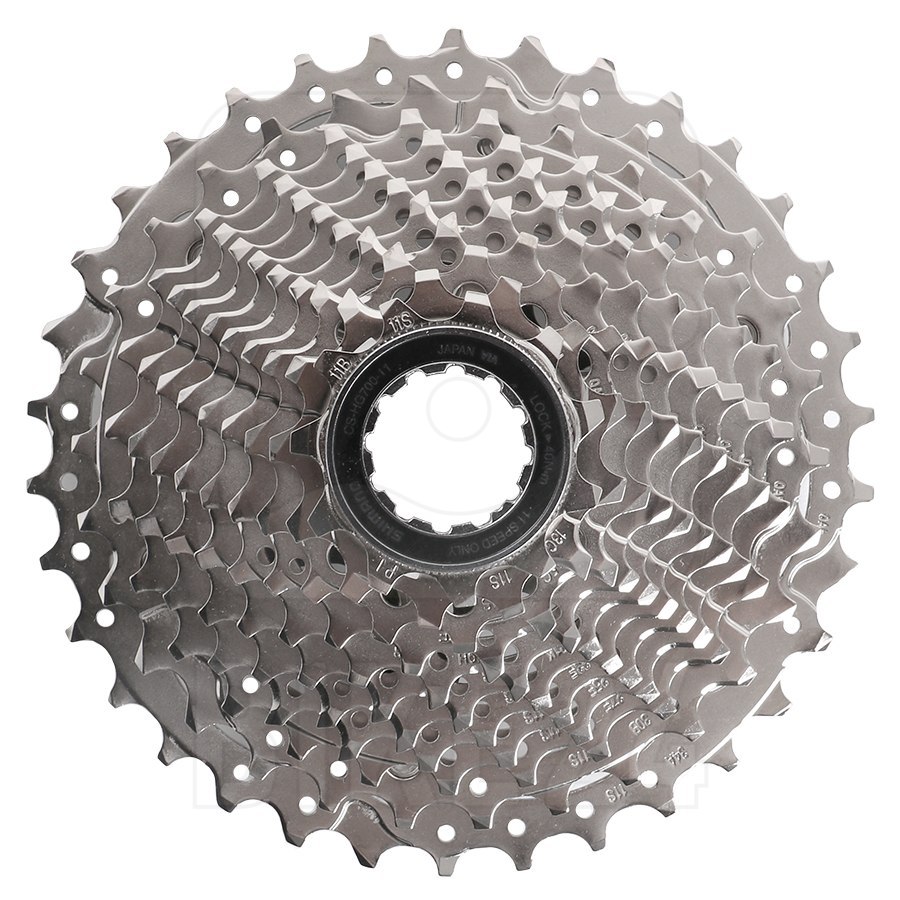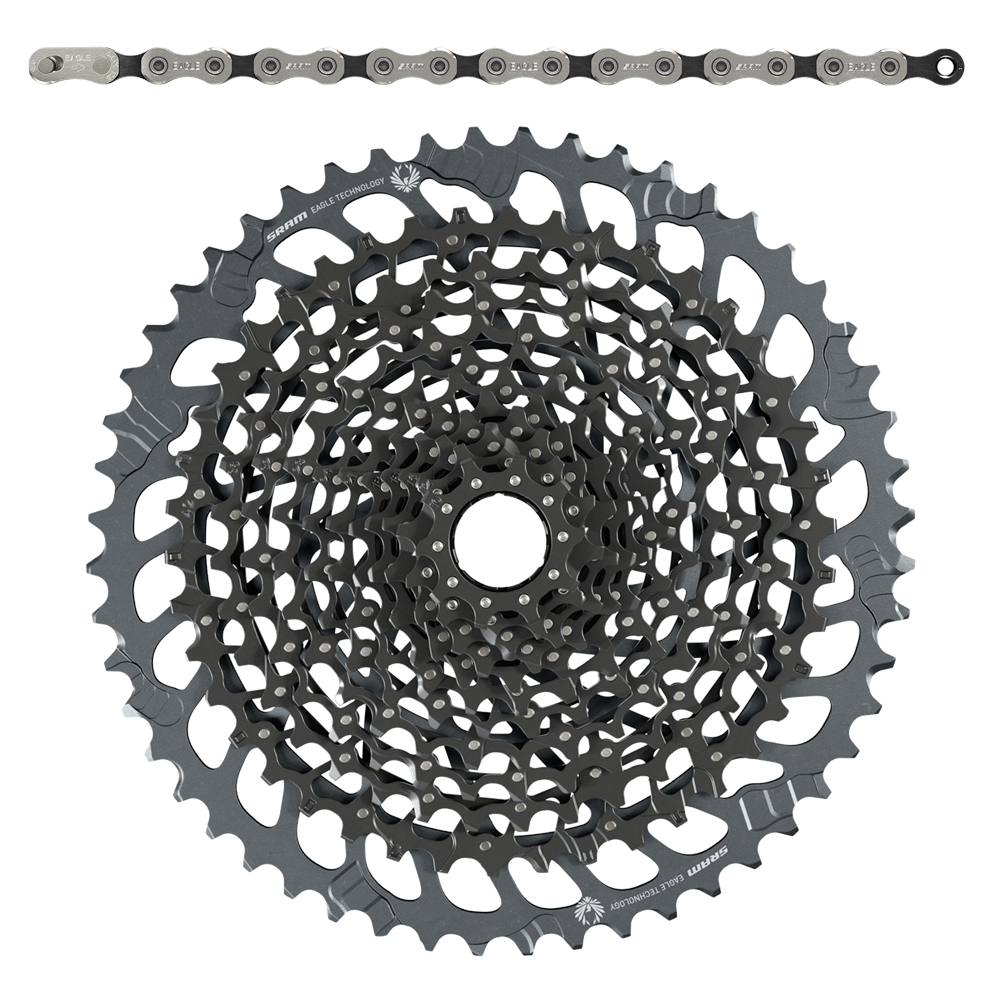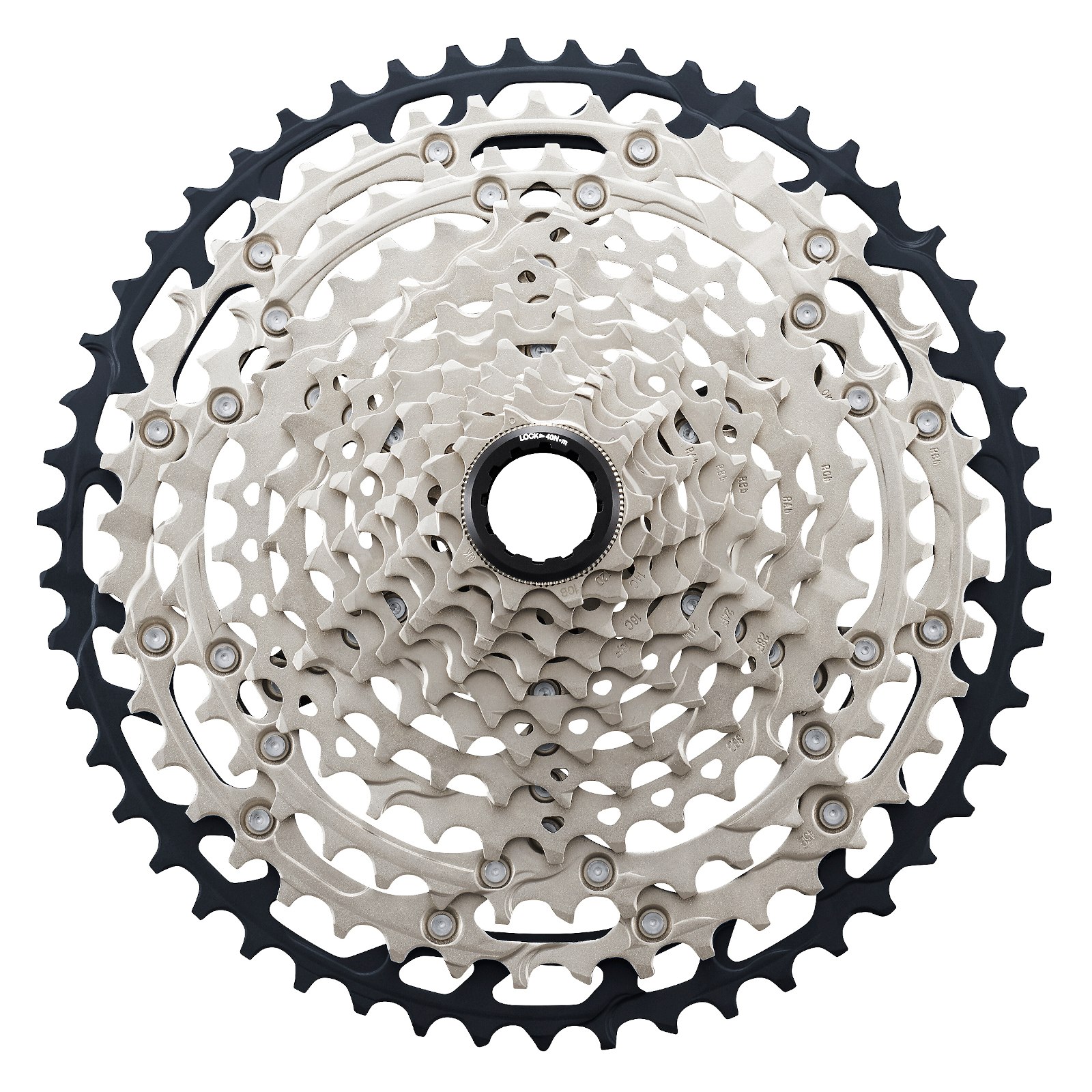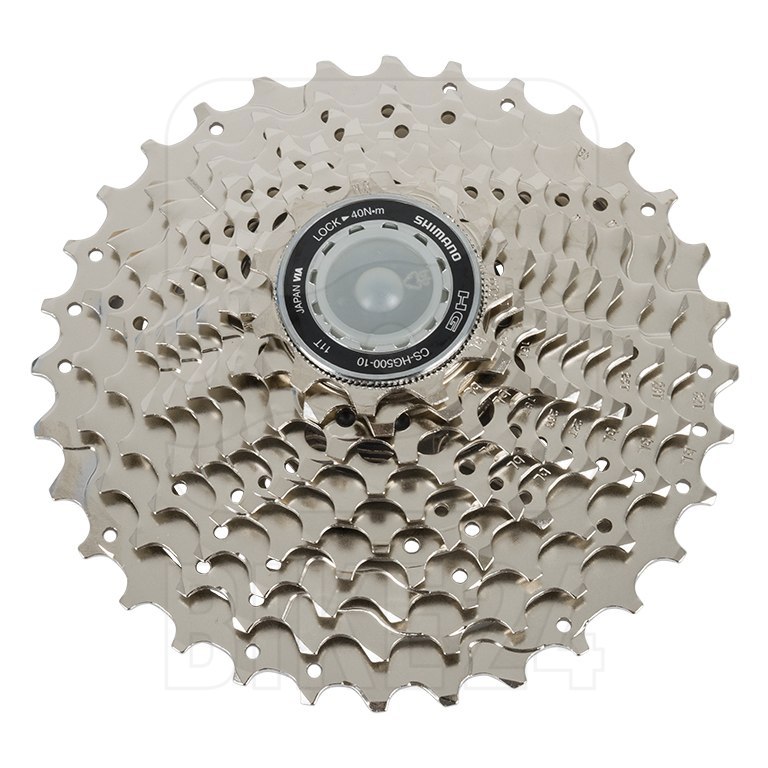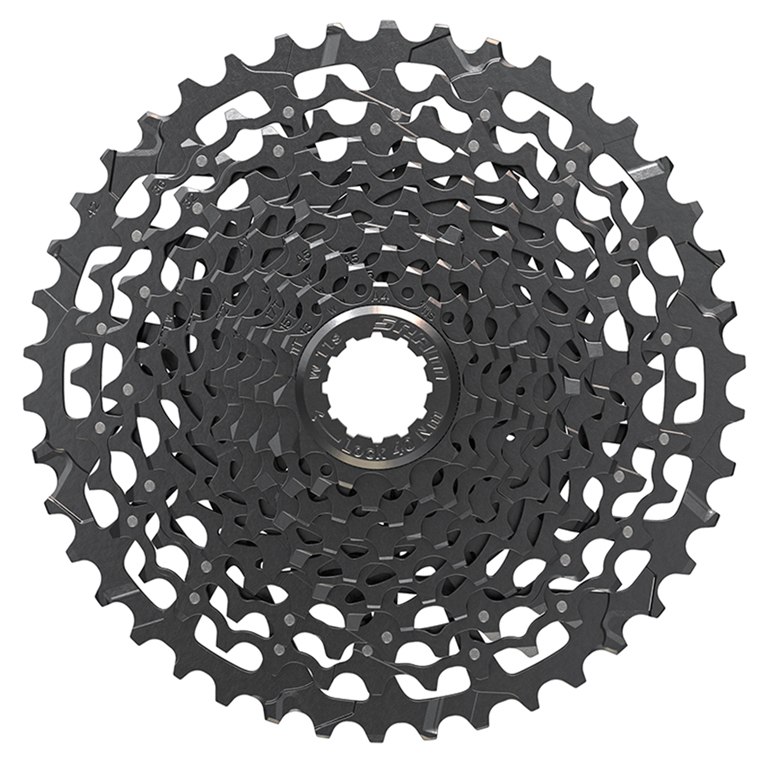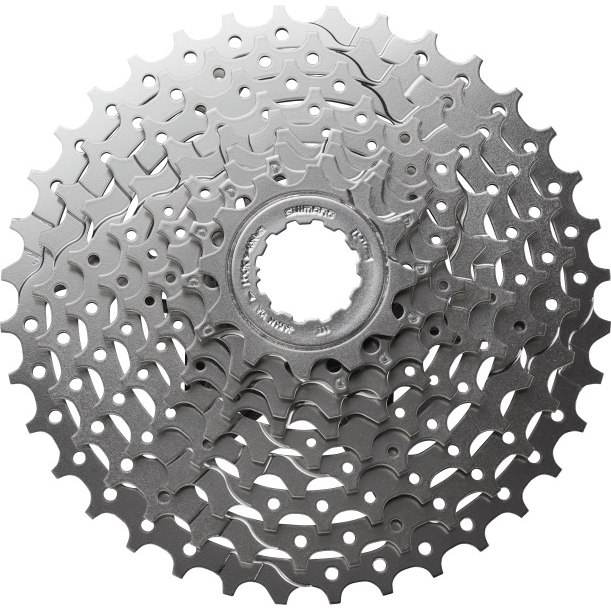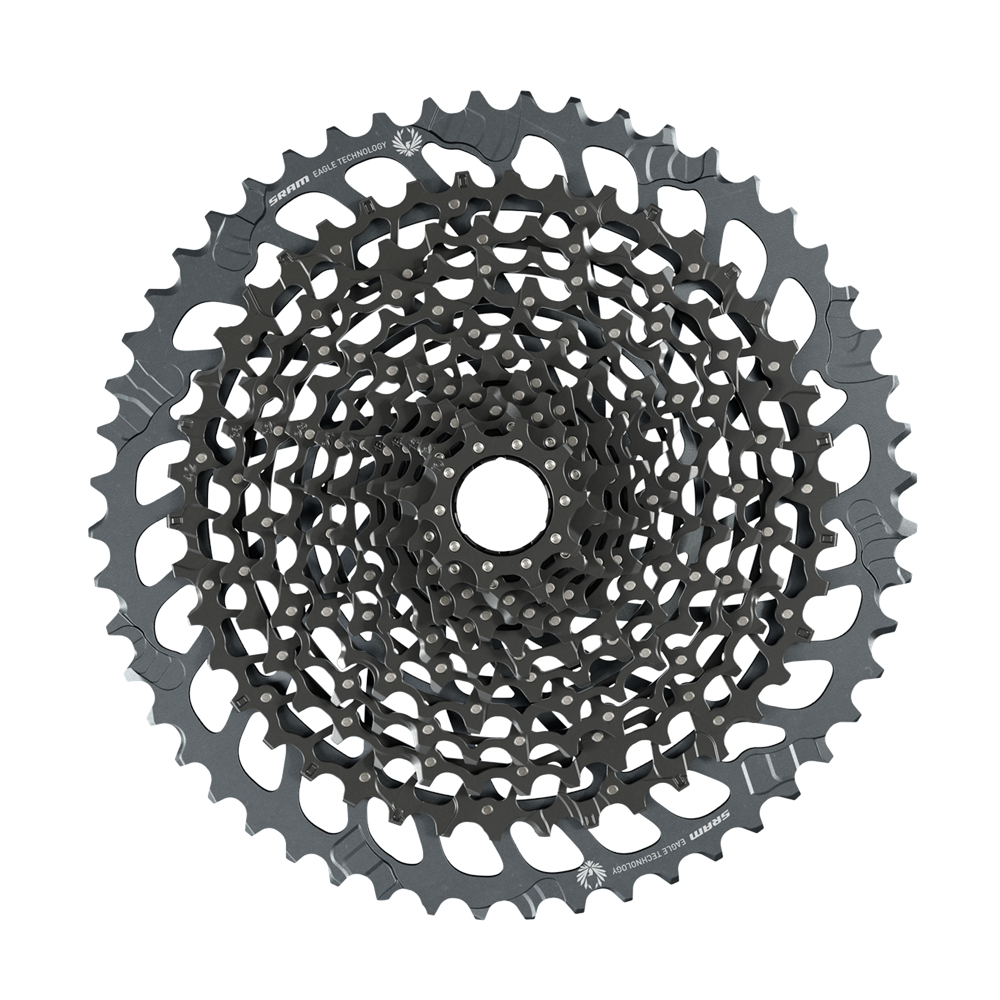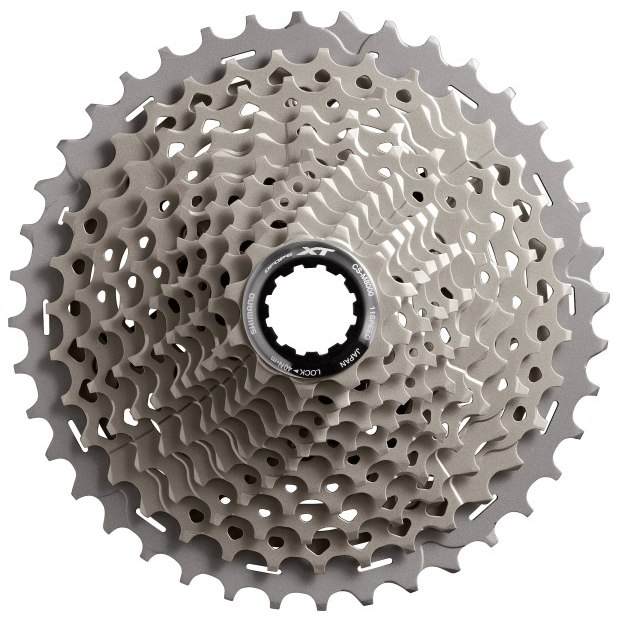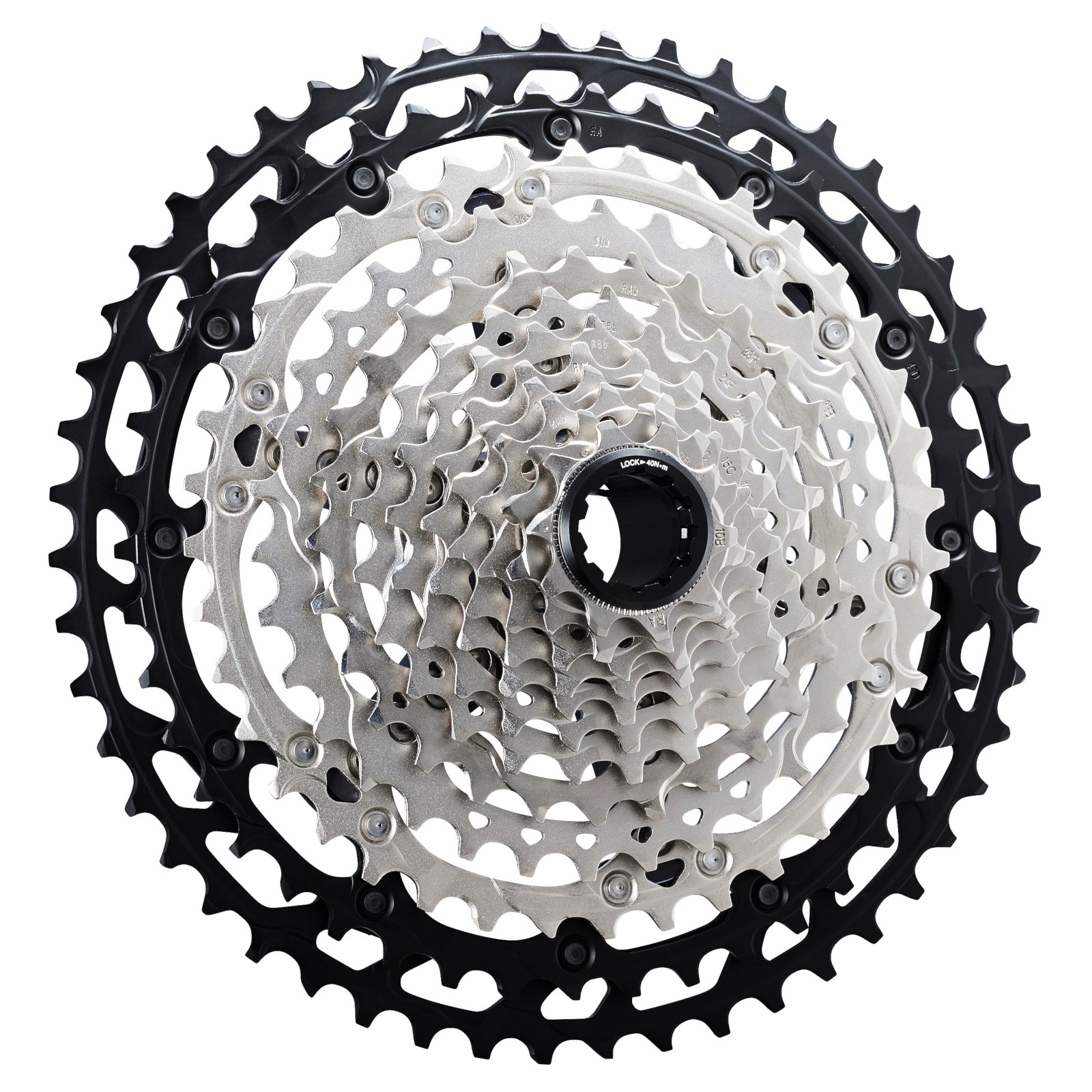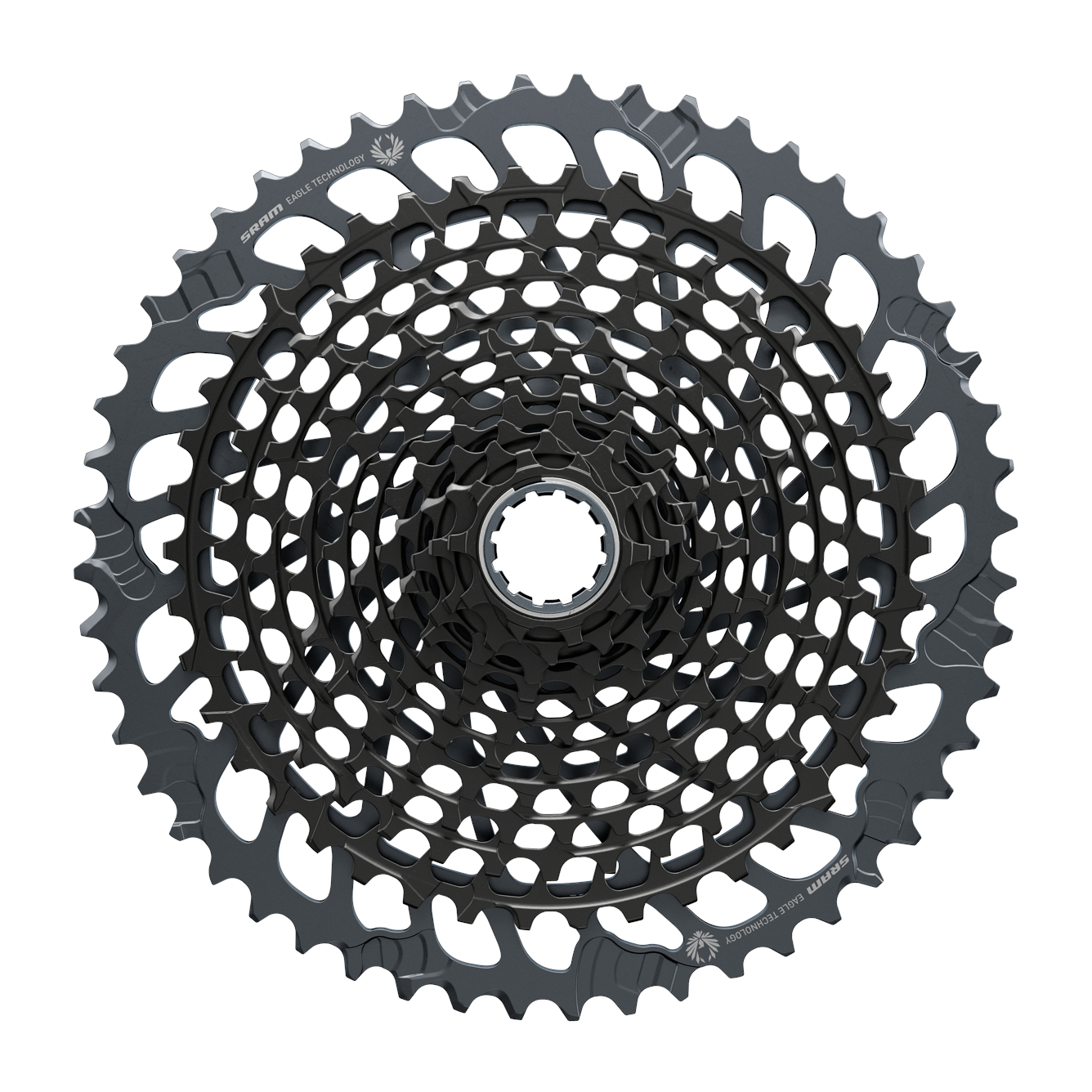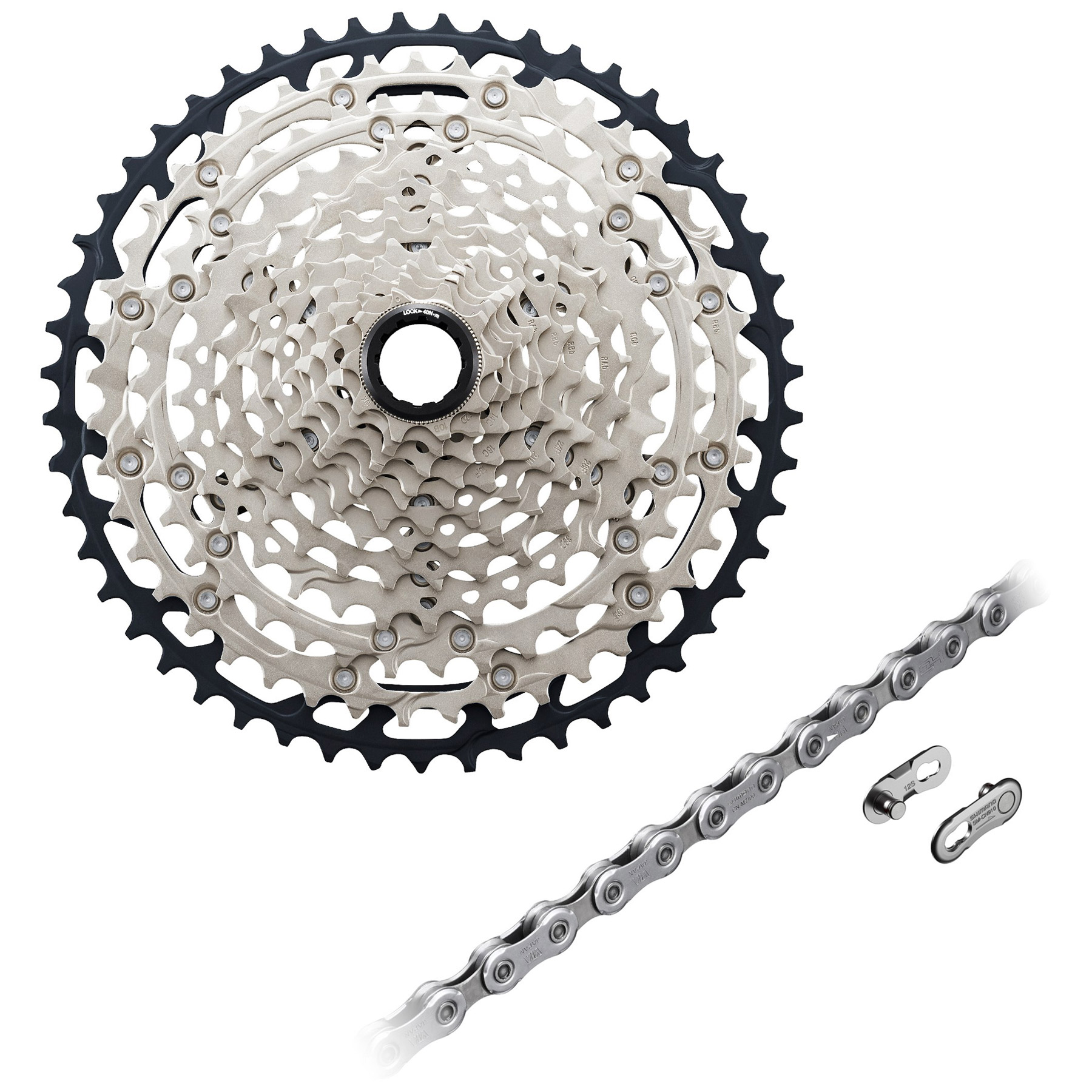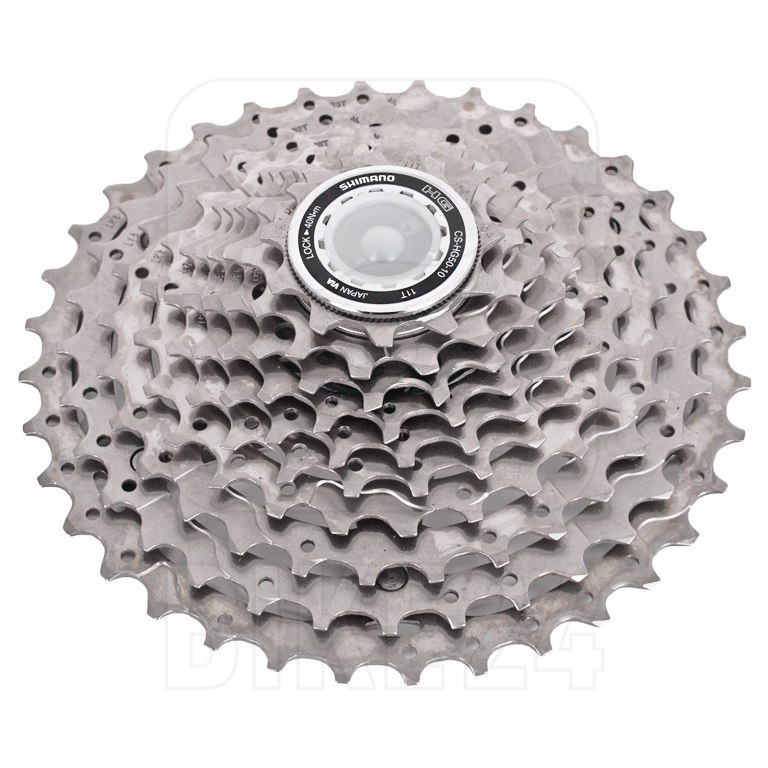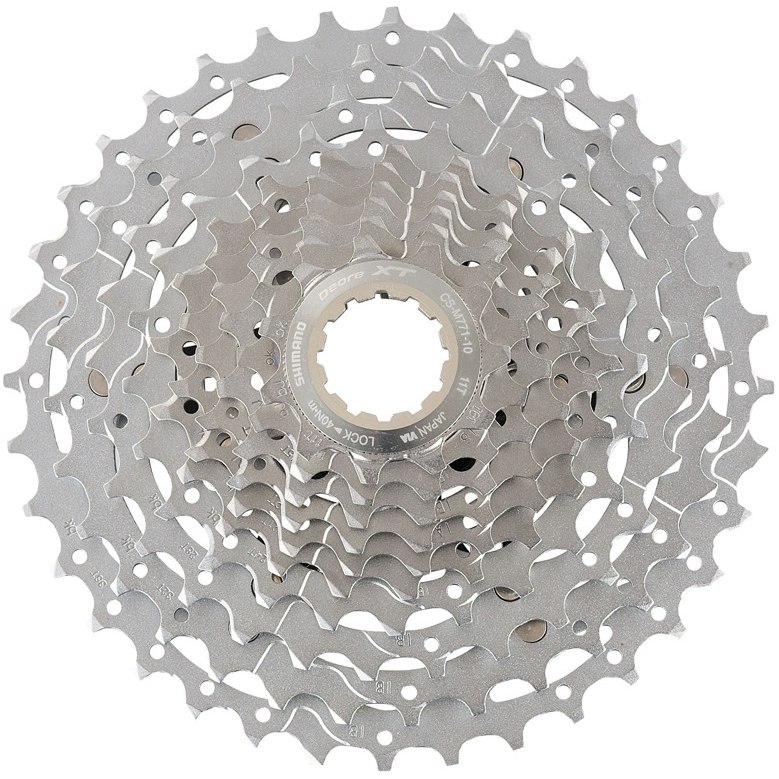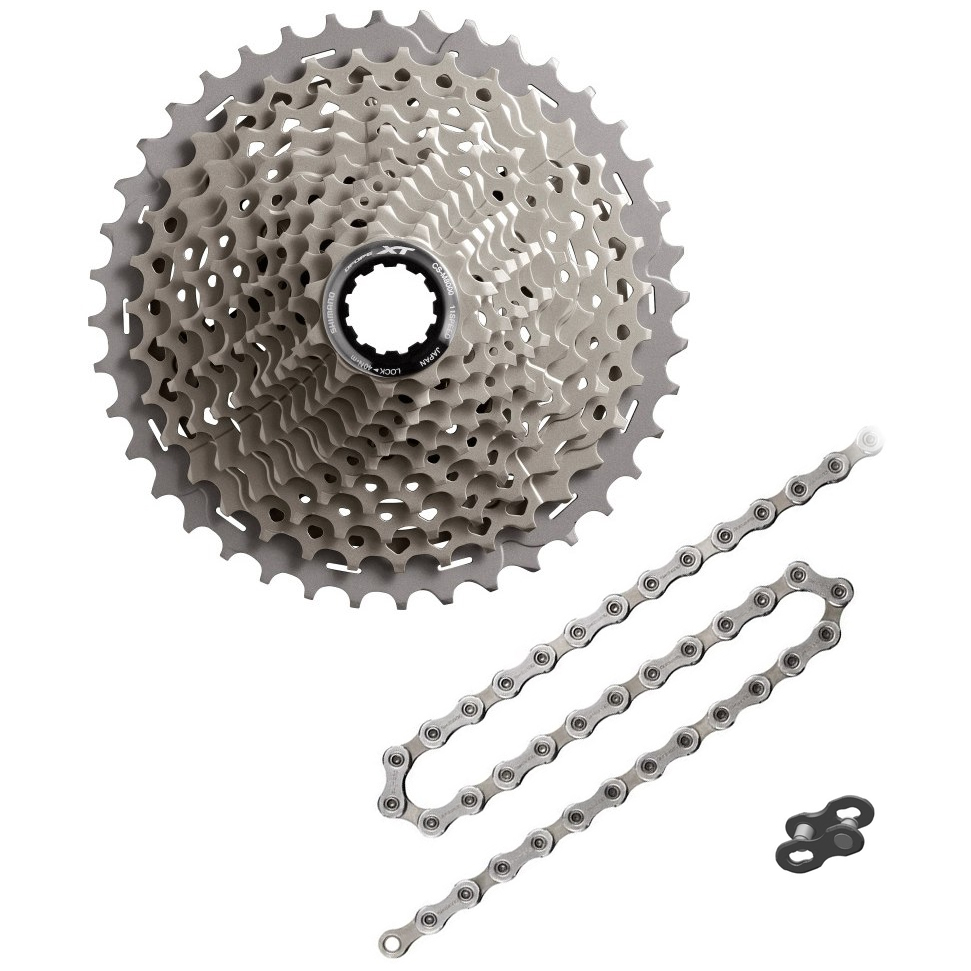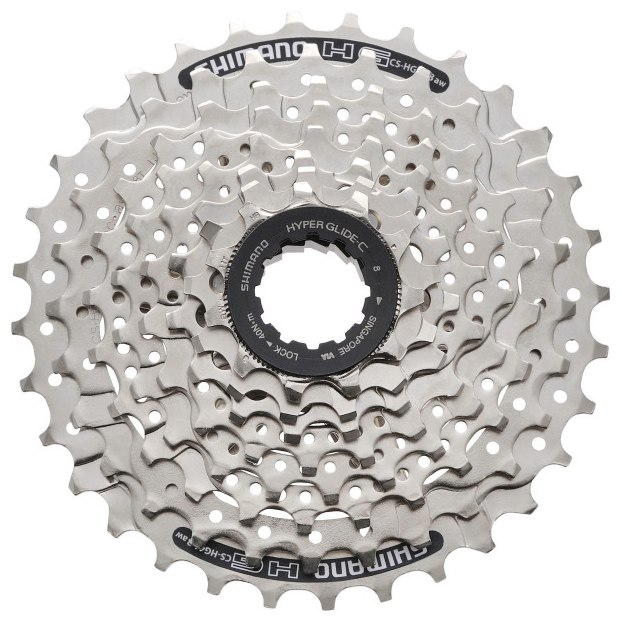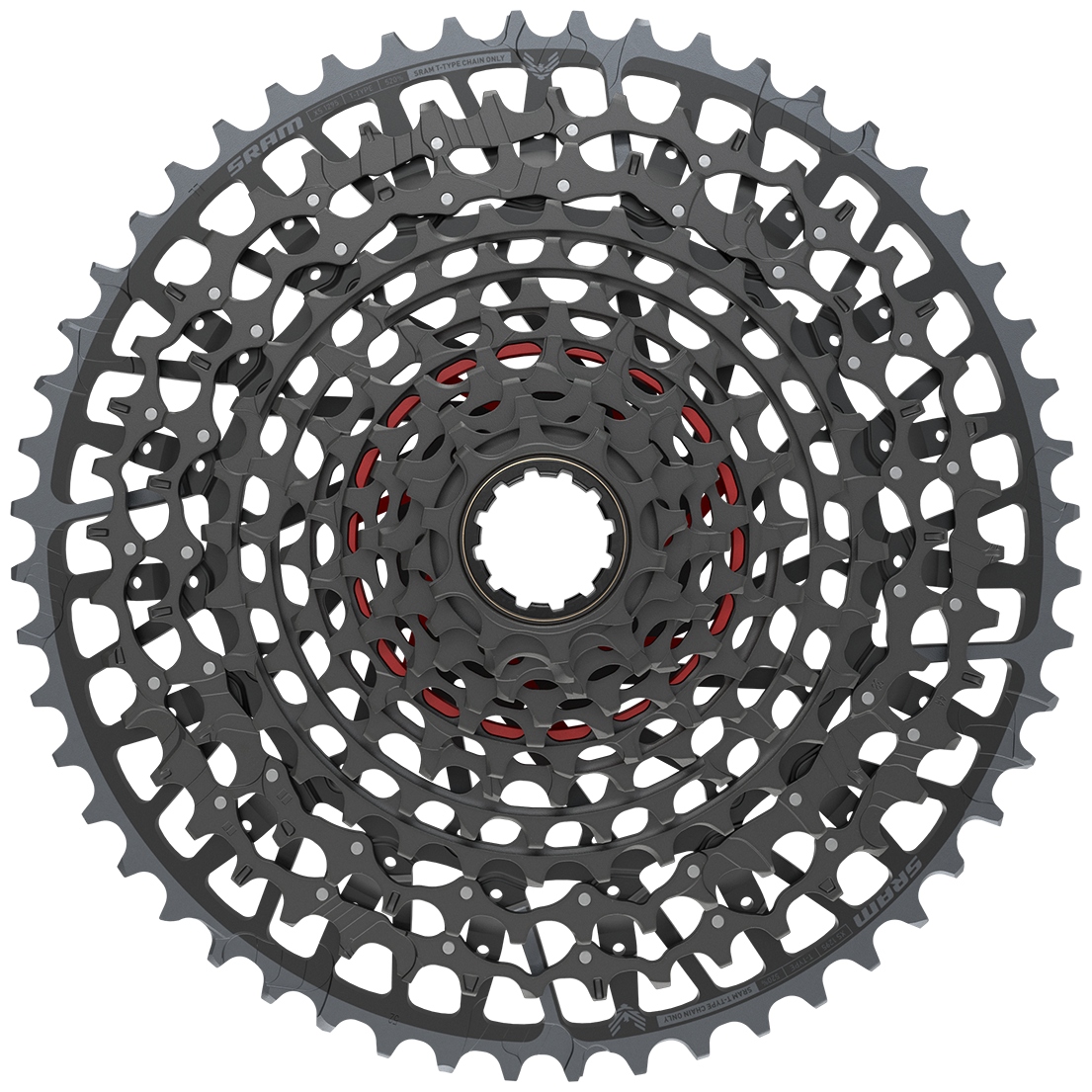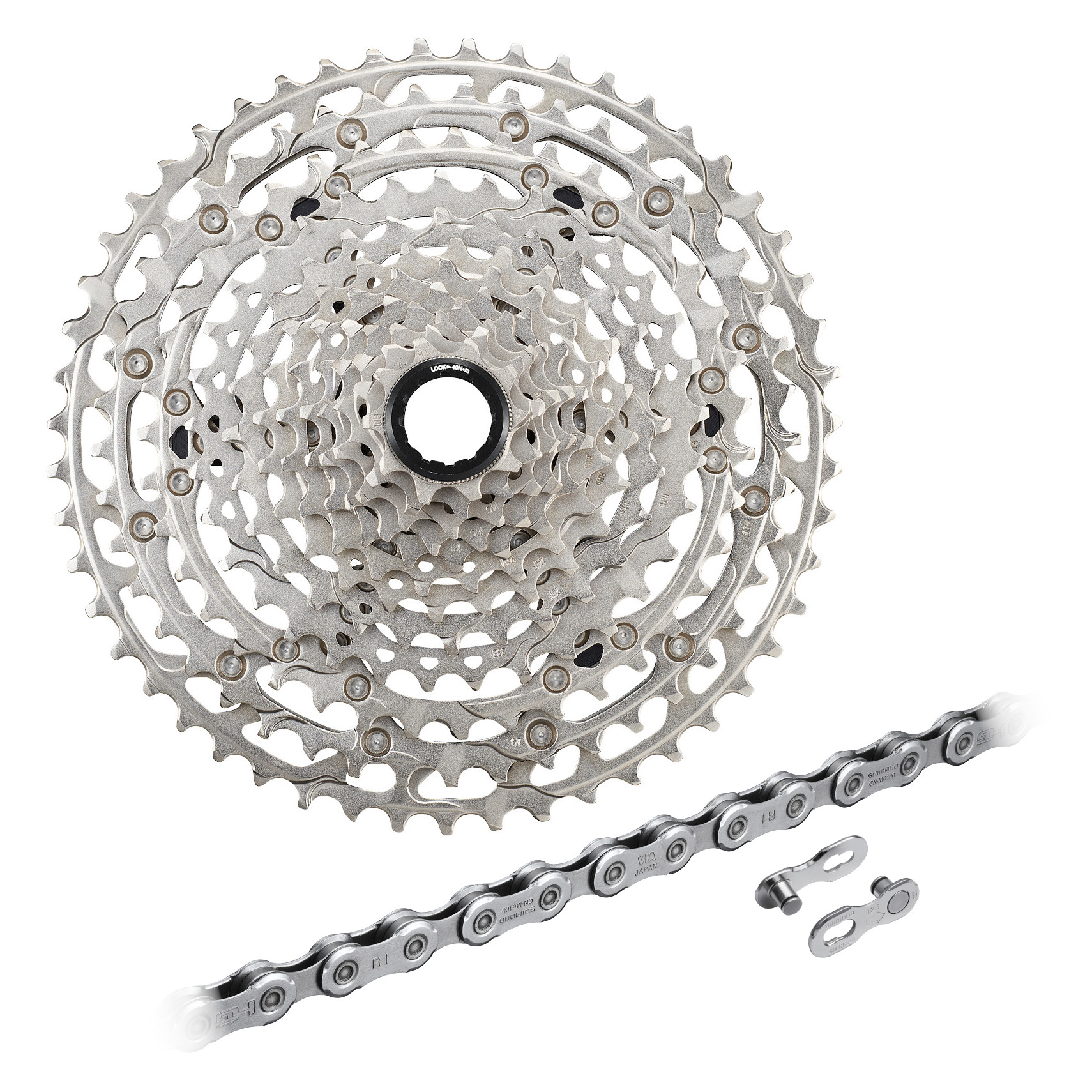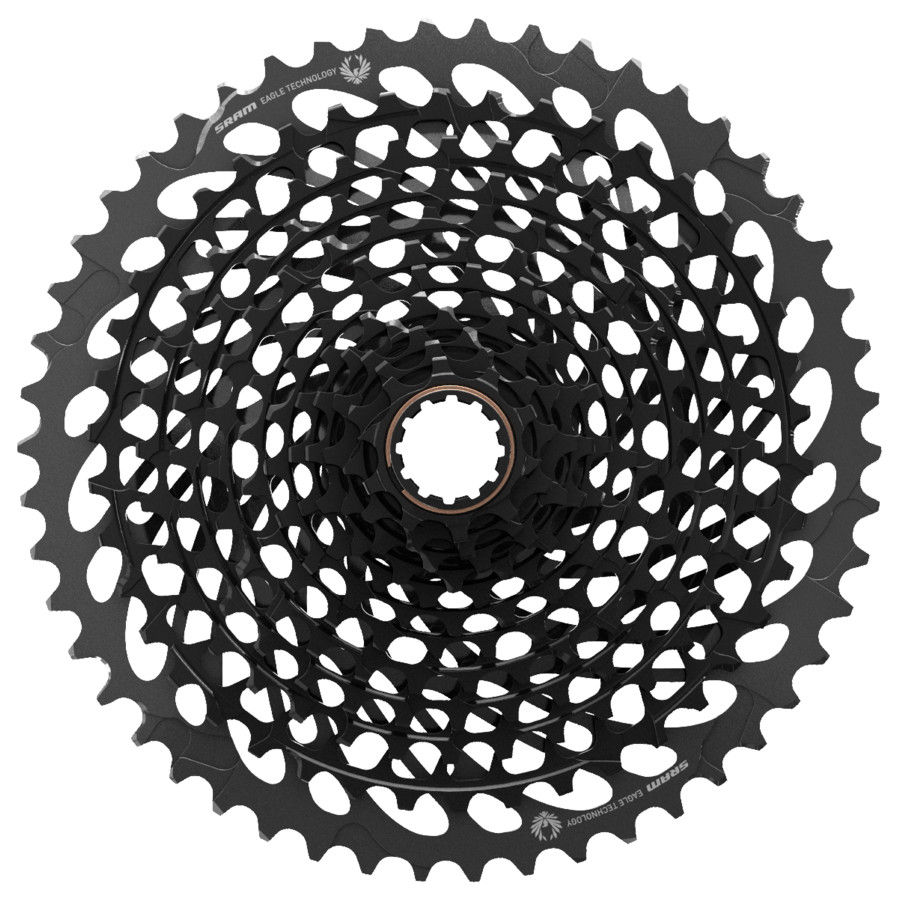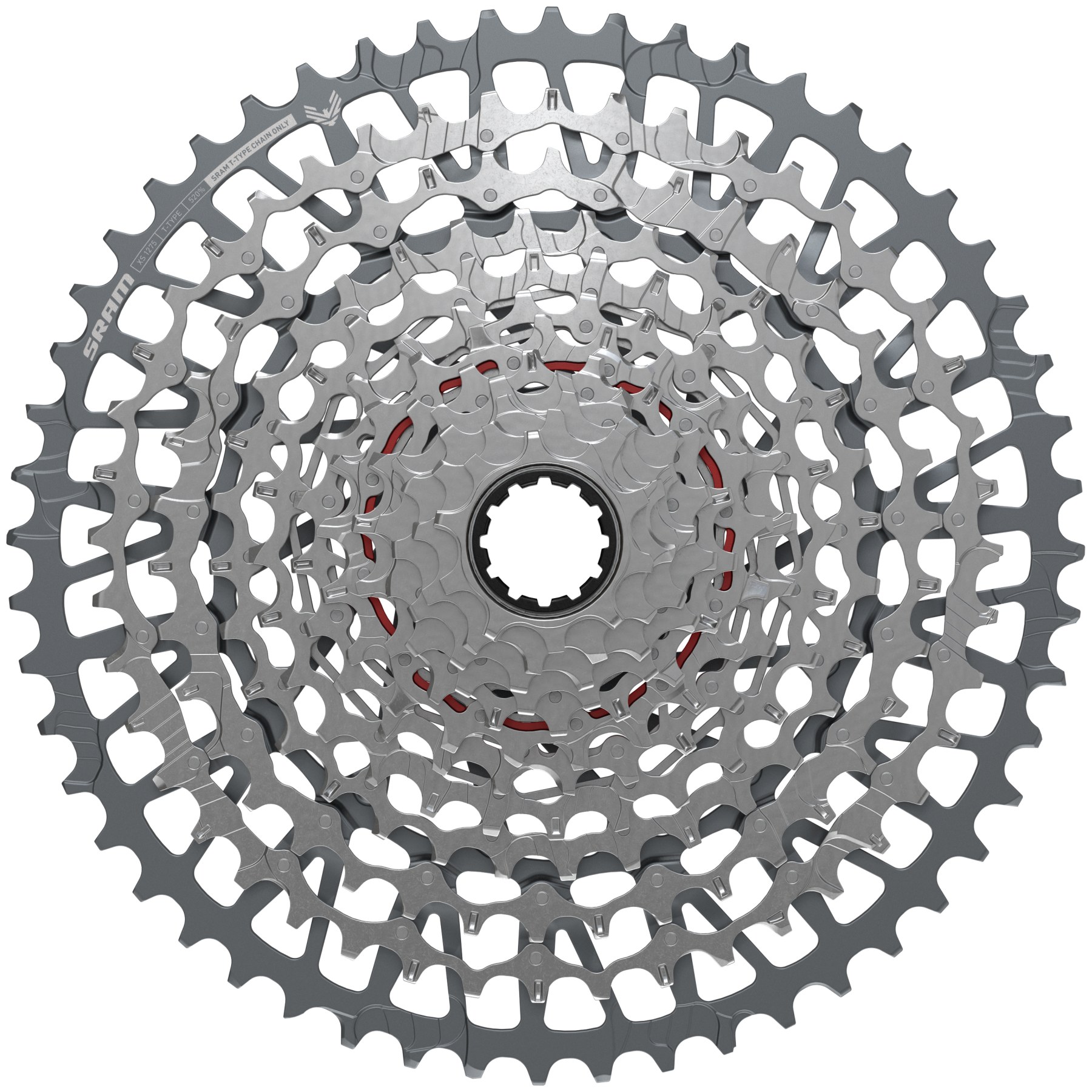- Home
- Cycling
- Parts
- Drivetrain
- Cassettes
- MTB Cassettes
Mountain Bike Cassettes – The Drive of Your MTB Experience
The mountain bike drives innovation for the whole bicycle industry, especially when it comes to derailleur gears. Constant development can be seen above all in MTB cassettes: More and more sprockets, ever wider gradations allow ever more diverse, better adjusted derailleurs on a bike. It’s no exaggeration to say that the cassette is the heart of every derailleur gear set. On this page we’ll explain to you which MTB cassettes there are and what you should look out for when buying and fitting a mountain bike cassette. Read more
Cassettes on Mountain Bikes – Why Are They So Important?
The cassette is the centrepiece on any mountain bike groupset. It consists of several gear wheels of different sizes. These are also called cogs or sprockets – which is why cassettes are also termed cog or sprocket sets. It sits on the freehub body on the rear wheel. The rear derailleur moves the chain between the individual cogs of the cassette. Together with the gear wheel at the front of the crank this is the derailleur ratio. As current mountain bikes and e-mountain bikes are, as a rule, equipped with a front sprocket without a derailleur, the cassette alone determines which gears are available on the mountain bike and how you pedal when on the bike. The following applies: the fewer teeth a sprocket has, the heavier the gear. On the other hand, the bigger a sprocket is, i.e. the more teeth it has, the lighter and more mountain-friendly the gear.
In order to offer plenty of gears on a mountain bike and to make steps between gears as small as possible, developers have created gears with more and more sprockets over the years. Current MTB groupsets have eleven or twelve gears. But the number of sprockets is not all it’s about: above all it is crucial on a mountain bike that the choice of gears is as small and as large as possible. The smallest sprocket wheels have at least ten teeth, but usually there are eleven teeth on the smallest cog. The largest rear sprocket on current standard mountain bike derailleurs have at least 32 teeth, the newest MTB derailleurs, however, have cogs with up to 52 teeth.
The number of teeth on the smallest and largest sprockets on a cassette are referred to as the cassette’s capacity. A cassette with 11-32 teeth has a small capacity; the differences between the number of teeth between the gears is rather small. In contrast, a cassette with 10-52 teeth has a large capacity. However, for this the steps between the gears are large.
Mountain Bike Cassettes – Which MTB Cassette do I need?
The most important criterion for a cassette is whether it has the right number of cogs for gear changes. The current market trend is for MTB groupsets with ten to twelve gears, so with ten to twelve cogs in the cassette. Also important is that the cassette fits the teeth of the freehub body of the rear wheel to which it is attached. The Japanese manufacturer Shimano and the American component brand SRAM use the same standard for common MTB groupsets. Thus this is the most common. However, SRAM uses its own standard called XD for current mountain bike gear systems with eleven and twelve gears.
As MTB cassettes from Shimano and SRAM use the same gearing, the question is of course, whether you can use the cassettes from both brands? Theoretically this is possible, but the manufacturer will recommend that you never use other brands for your setup. That’s because derailleur mechanisms, chains and cassettes are matched to each other in one groupset, the climbing aids on each cog are designed in such a way that they are in perfect harmony with the chain and the derailleur mechanism. It is therefore advisable to use all parts from the same manufacturer for smooth shifting. However, it is possible to use parts from different MTB groups from the same manufacturer without any problems. Always with the condition that the number of gears and the size of the cogs are harmonised with the respective derailleur mechanism.
Mountain Bike Cassettes at a Glance – These are the Models
- The Brands: SRAM and Shimano dominate the MTB groupset market. Both manufacturers use the same teeth between the cassette and the freehub body. Some smaller brands offer their own groupsets or cassettes as replacement parts for the groupsets of the big brands — sometimes these use common standards, but they also have their own. As a rule of thumb, the cassette must fit the freehub on your rear wheel.
- The Number of Gears: The number of sprockets is determined by the gear lever and the derailleur mechanism — so an MTB cassette must have the number of sprockets that fits to the gear lever mechanism.
- The Capacity: The smallest sprocket in a cassette is generally defined by the freehub: Eleven sprockets is usual on MTBs, the current top groups, however, have a smaller sprocket with ten teeth. The largest sprocket on a mountain bike has a wide range of 32 to 52 teeth. However, you can vary the size of the largest sprocket and choose the largest possible sprocket for easy gears on mountain climbs or a smaller sprocket for smaller steps between gears. But be careful: the total capacity is still set by the rear derailleur. If you want to change the cassette capacity, you must look at the operator manual for your rear derailleur to see which total capacity the derailleur offers.
Can I Use Cassettes from Other Manufacturers or with Different Capacities?
Basically the following applies: if you need a new cassette and have been happy with the gear ratio on your bike so far, simply buy the same cassette again. The rule of thumb applies here: same manufacturer, same groupset, same capacity. So the new cassette fits and works, guaranteed problem-free and spares you fraught handiwork.
But if you want to change your set-up, you must pay attention to various factors, as described above. You must take care that the gearing fits the freehub body, that the number of sprockets fits the gears and that the mounted derailleur can handle the capacity of the new cassette. You may also need to fit a longer or shorter chain if you change the cassette’s capacity.
What Should I Look Out For When Assembling and Maintaining MTB Cassettes?
If you want to mount cassettes yourself, you’ll need various bicycle tools for this. In all cases you’ll need a cassette removal tool and a chain whip with which to prevent the cassette from twisting on the freehub body when opening the lock ring. Investing in these two tools is worthwhile if you regularly change cassettes on a mountain bike yourself.
To maintain the cassette, you should always clean coarse dirt off immediately after a bike ride with a little water and a brush. Pressure washers are generally taboo — even if they make this work a lot easier at first glance. The reason is the sensitivity of parts in a groupset. This goes especially for cassettes — the high pressure can force water into the hub body or destroy the lubrication of the bearings. When you clean your bike thoroughly, pull a cloth dipped in some oil thoroughly between all the cogs of the cassette. You don't need to oil or lubricate the cassette. What is more, at BIKE24 you’ll find a wide range of different bicycle care products for your groupset.
MTB Cassettes – Summary
- The cassette is the centrepiece on any mountain bike derailleur group set.
- It consists of several gear wheels or cogs of different sizes.
- To a large extent the cassette determines how heavy a gear is. The following applies: the fewer teeth a sprocket has, the heavier the gear. Then again, the larger the sprocket, the lighter the gear.
- The MTB cassette must have the right number of cogs for the derailleur.
- The cassette must match the toothing of the freehub on which it sits.
- If you want to change the number of teeth to a new cassette, you must take into account the capacity of the derailleur and the length of the chain.
